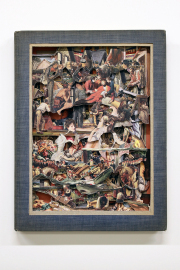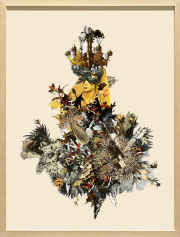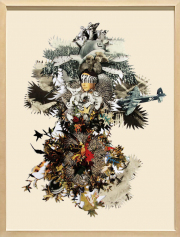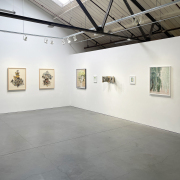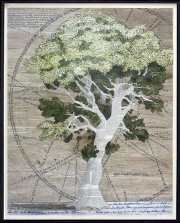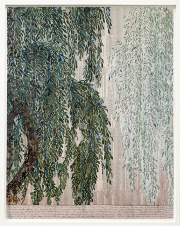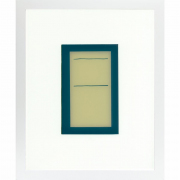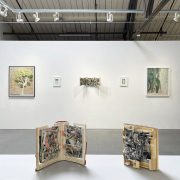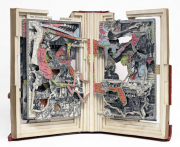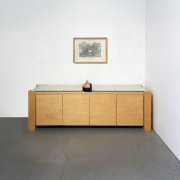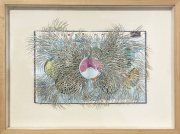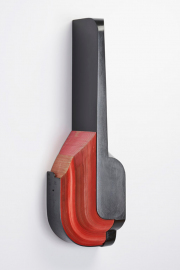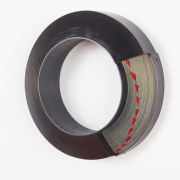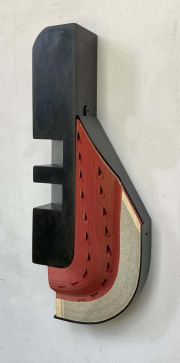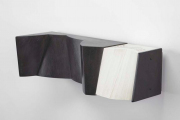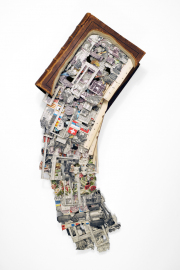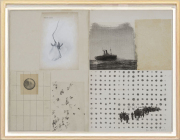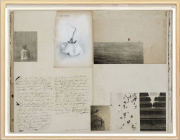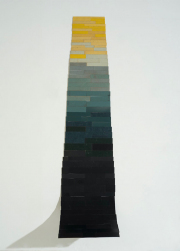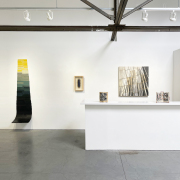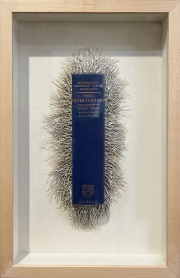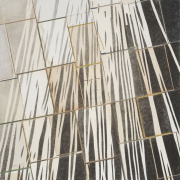.
.
.
Turning the Page
Group Exhibition
Curated by Donna Seager
June 5 to August 4, 2025
NANCY TOOMEY FINE ART
1275 Minnesota Street, San Francisco

Brian Dettmer, Modern America Aint, 2025, hardcover book, acrylic varnish, 15.25 x 11.5 x 1.125 inches
Nancy Toomey Fine Art is pleased to announce a group exhibition titled Turning the Page on view from June 5 to August 4, 2025, curated by Donna Seager with works by Gale Antokal, Renée Bott, Brian Dettmer, Andrew Hayes, Maria Park, Emily Payne, and Barbara Wildenboer.
The gallery is located inside San Francisco’s Minnesota Street Project, 1275 Minnesota Street. Gallery hours are Tuesday through Saturday, 12pm to 4pm, and by appointment–please contact nancy@nancytoomeyfineart.com or 415-307-9038.

Brian Dettmer, Modern America Aint, 2025, hardcover book, acrylic varnish, 15.25 x 11.5 x 1.125 inches
Turning the Page, a group exhibition curated by Donna Seager at Nancy Toomey Fine Art, examines the book as a primary medium for creating art. The goal is to explore as many approaches as possible. It begins with the belief that the physical qualities of books–the pages, papers, inks, covers, and bindings provide artists with a source material that is difficult to surpass, rich in associations and textures to be mined and repurposed in satisfying and meaningful ways. “The seven artists represented each approach the book in a unique way,” says curator Seager. “Weaving materiality and meaning, these artists inspire us to consider books not just for their content, but their intrinsic tactile and visual qualities.”

Gale Antokal, Judith’s Hair (La chioma di Giuditta), 2024, collage with 17th century atlas book plates, 19.25 x 20.25 inches
Gale Antokal weaves the map of her collages with layers of personal stories and intimate objects. A professor emeritus at San Jose State University in the Department of Art and Art History, Antokal is able to elicit emotional responses to the fragility and transitory nature of human experience with her eye for subtleties and elegant transitions.

Renée Bott, Fact & Fiction, 2024, acrylic and color pencil on book pages mounted to Japanese paper, 34.5 x 27.5 inches
Renée Bott uses book pages as the underlying armature for her work. The content of the text often offers inspiration for the images for Bott, a founding partner and master printer of Paulson Bott Press, a fine print atelier located in Berkeley. In Bott’s Fact & Fiction, for example, “The central image depicts a mature tree inspired by an etching from the 1600s, surrounded by the scientific chart of the orbit of Jupiter and its four moons,” says the artist. “A few lines of Jane Austen’s handwriting, taken from a letter she wrote, anchor the tree to the ground. The title makes a general reference to the idea that great art, music, and literature, or any creation of a fictitious nature, come from people living in the actual natural world.”

Brian Dettmer, Spellage, 2020, hardcover book, acrylic varnish, epoxy putty, acrylic, wood, 35 x 16 x 5 inches
Brian Dettmer, one of the leading contemporary artists working with the book today, mines the book, carving beneath the surface to reveal images and texts, all the while altering their shapes to create new and interesting forms. Chicago-based Dettmer does not artificially remove and replace images, but reveals them exactly where they are in the original structure, a feat of incredible skill and planning. Spellage, for example, is a wall sculpture derived from a richly illustrated and voluminous dictionary; the Standard Dictionary published in 1896. The pages of this antiquarian tome spill out from the historic covers like a cornucopia splaying its vast riches. “The structure is similar to a guitar or other string instruments,” says Dettmer, “suggesting the piece could be plucked and played to radiate knowledge far beyond its physical form.”

Andrew Hayes, Section, 2018, book pages, steel, 12 x 12 x 3 inches
Andrew Hayes creates sculpture combining book pages with exquisite steel structures. Book pages behave like liquids that take the shape of the form that holds them. The critical tension between the ephemeral and durable is simply and elegantly presented. “Book paper and steel are perceived differently and placed in different contexts in our lives,” says Hayes. “Unbound blocks of text lose their original meaning when I cut the pages from their bindings. This allows me to respond to the shape and texture of the paper and give it a new formal context. Introducing metal to the composition allows me to create a new structure and support for the loose pages, and elevates the steel–a familiar material in industry and architecture–to the level of the book–an object for contemplation.”

Maria Park, Cover 10, 2013, acrylic reverse painted on glass, 9 x 11 inches (framed)
Maria Park’s Cover paintings are images of Penguin Book covers published between 1937 and 1982, excluding both text and representational imagery. In this series, Park reverse paints with acrylic on transparent sheets of glass. An associate professor in the College of Architecture, Art, and Planning at Cornell University with an upcoming exhibition at the Everson Museum of Art in Syracuse, New York, her work explores human presence and agency within a media-reliant society.

Brian Dettmer, Modern America Aint, 2025, hardcover book, acrylic varnish, 15.25 x 11.5 x 1.125 inches
Emily Payne uses book covers conceptually as a substrate for her works. Payne, based in Berkeley, focuses on the materiality of pedestrian items, transforming them into objects with a minimalist design sensibility. She is particularly interested in paper, and she works with specialized types as well as pages pulled from books. “I am inspired to work with and transform ordinary objects that show traces of the passage of time and human history,” says the artist.

Barbara Wildenboer, Folly: Blindsided I, 2018, altered books bookpage sculpture, collage, 37.5 x 27 inches
Barbara Wildenboer is a South African artist who uses a combination of analog and digital processes to create work that mostly consists of collage, photo and paper construction, installation, digitally animated collage works, and book arts. For example, using the medium of collage to powerful effect, Wildenboer’s Folly series comprises highly textured and sculptural works that serve as contemporary vanitases within the context of the Anthropocene. Through her practice, Wildenboer reflects on how humankind is affected by globalization, economic upheavals, scarcity, pollution and man-made disasters. She explores both beauty and excess, the magnitude and the mystery of the cosmos, contrasted with the relative insignificance of humans.

Donna Seager
With over 40 years in the art business, Donna Seager specializes in contemporary fine art with a focus on works that combine content with a mastery of materials. Now operating as Donna Seager Fine Arts & Artists’ Books she is continuing in the tradition of Seager Gray Gallery established in Mill Valley with Suzanne Gray–a premier gallery that took the stage in international fairs, garnered critical review, and was recognized beyond the San Francisco Bay Area. Seager has curated exhibitions of book-related works for the Brooklyn Public Library, The San Jose Institute of Contemporary Art, and the Sun Valley Writers Conference.

